We started our first day in Ho Chi Minh city with an up close and personal history lesson on guerilla warfare at Cu Chi Tunnels. It's more than two hour's drive from the hustle and bustle of HCMC.
Built by local fighters during the Indochina conflict, the Cu Chi tunnels served as a base from which they could operate from close to the Southern Vietnamese capital.
Initial construction started in 1948 when the local fighters required somewhere to hide from French air attacks. By 1965, the tunnel complex was estimated to consist over 200 km of tunnels. It included hospitals, schools, meeting rooms, kitchens, and sleeping quarters.
Life was difficult for the inhabitants, and to protect against outside intruders, booby traps were laid throughout the complex.
Our tour guide took us on a fascinating tour of the Cu Chi Tunnels where we learnt about the conditions the people lived in and the hardships they faced. It was amazing to see the size of the tunnels.
It is really bone chilling to imagine the long periods of their stay underground as well as the regular commuting through these narrow, customized tunnels. I admire the ingenuity of the Vietnamese. They were determined to stay alive. No wonder they win the war.
We spent almost all of our time walking around above ground looking at the various ways in which the Vietnamese were able to camouflage and hide their tunnels and operations. We were shown hidden entrances and hidden ventilation system in the grounds.
We were offered a chance to explore the tunnels on all fours or sit and drag our butts along to experience the thrill of being inside one. I declined as it was too claustrophobic for me. :P
We saw huge bomb craters left from B-52 bombs and a display of the bomb casings representing the amount of explosives dropped on Cu Chi per day. Visitors can also climb upon the remains of an American tank to have a photo taken.
For an extra fee, we could fire off rounds from an AK47 or MK16 (like the ones the Viet Cong used) at the nearby rifle range. We didn't take up the offer.
We watched a demonstration of making spring roll wrappers.
After touring the Cu Chi Tunnels, we relaxed with steamed tapioca and hot tea. The underground root was one of the staple food the fighters survived on during wartime. The pandan leaves were placed around the underground tunnels to keep away snakes.
Be prepared to get dirty and sweaty in this tour. It was an amazing experience and a very moving history lesson for me. Worth a visit.
Credit : explanatory guide of Cu Chi Tunnels
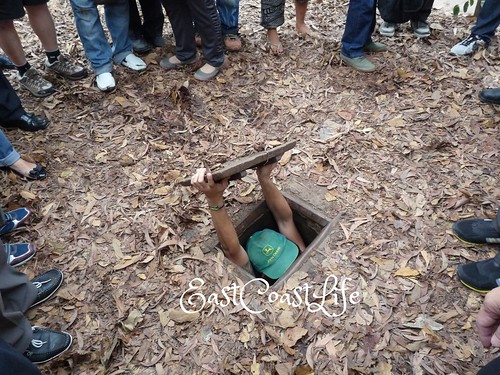
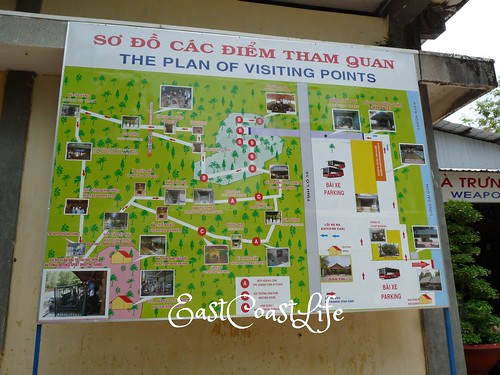
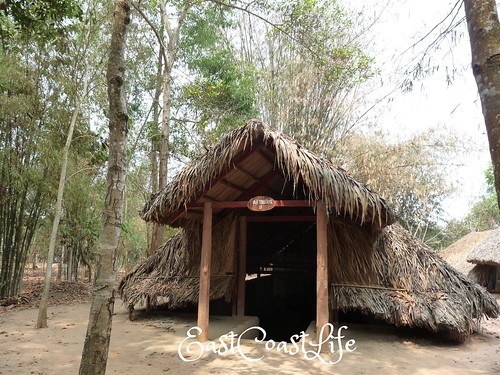
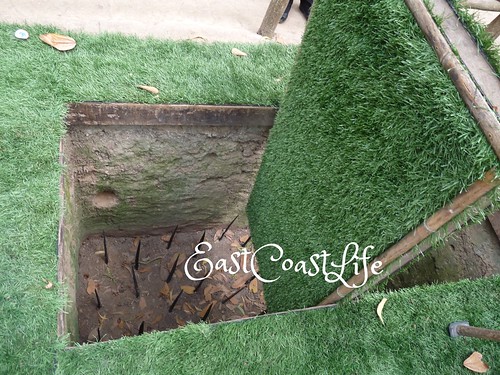
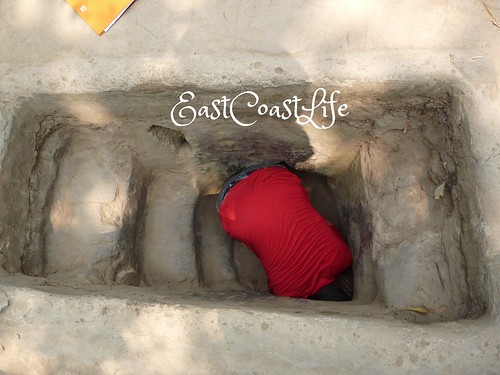
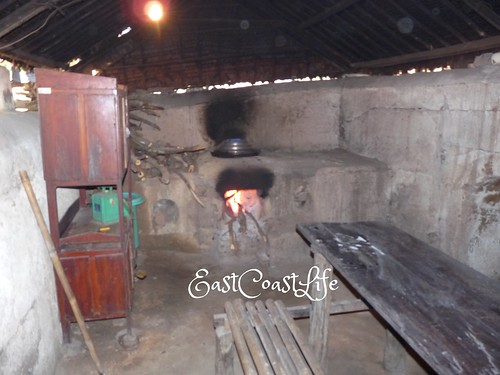

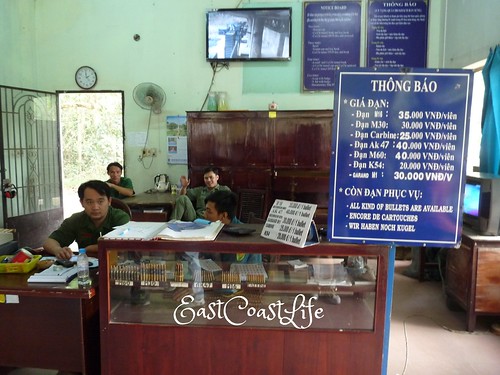
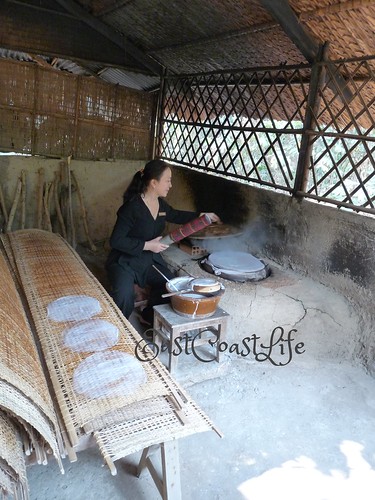
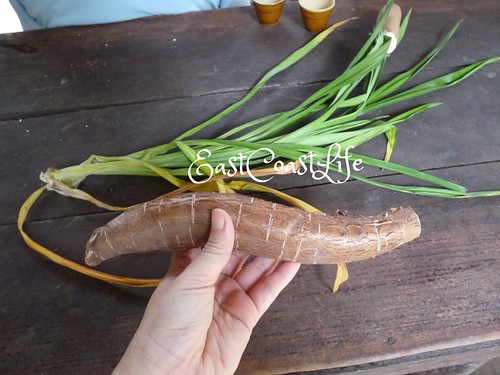
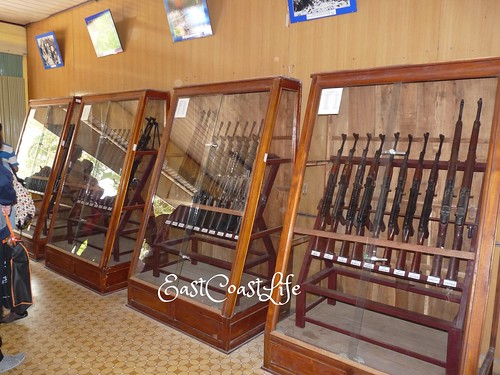
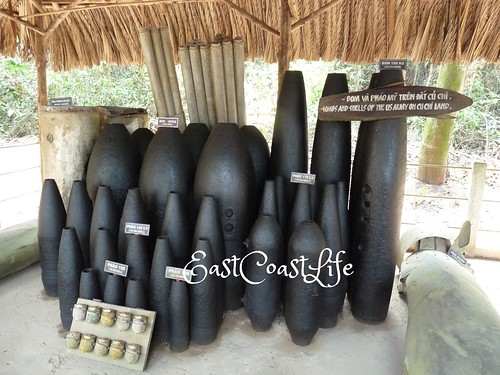
That time i went, i got go inside the tunnel, hehe...
ReplyDeleteYou have already visited the Cu Chi Tunnels!? You are so adventurous, I didn't dare to go into narrow and stuffy tunnels :P
DeleteWent there few years back...
DeleteSharon, you so daring ...
DeleteWonderful post ! I should know more about this war! I share it on my facebook profil because you presented it very well and the subject is very interesting!
ReplyDeleteSandra Carlier /Claudie Claudie
Thank you Sandra for sharing :)
DeleteCan't imagine the life that the people had to go through :(
ReplyDeleteIncredible that they had to live like this for years. I felt sad hearing the hardships they faced.
Deletewhat a harsh way of life for war survival. i am glad the tunnels are preserved for historical purposes. thank you for sharing this reality.
ReplyDeleteYou're welcome :)
DeleteHi ECL, it must have been something to be able to have first hand experience seeing these preserved tunnels and to learn about the hardships. Thank you for sharing.
ReplyDeleteKaren, you're welcome :) I was shocked and also saddened by how much hardships the residents went through during the war. I could not imagine myself surviving in such tough conditions.
DeleteA great post! Nice to see!
ReplyDeleteThanks Hans.
DeleteWow.. going through memory lane for me.. I was there in 1999 and it didn't look as clean as now.. it was more raw.. definitely no carpet grass.. lol.. Anyway, the tapioca was served in the rooms in one of the tunnel so we got to feel what it was like eating inside the tunnel complete with the smell.. haha.. but it was all for the experience and I was glad I went through it.. Wanted to buy the souvenirs made from bullets but was scared couldnt bring it into SG so forego..
ReplyDeleteSince 1999, I believe there is some improvement. When I was told we were going to visit the tunnels, I was apprehensive and wanted to skip it but my husband convinced me to give it a try. It shocked me. So sad to see the harsh conditions a human being had to go through. I doubt I can survive a war living like this. :P We ate tapioca in airy sheds, I went down to the tunnels, there was a lack of ventilation and an unpleasant smell.The bullet souvenirs looked so cool but they would not be allowed to pass through Singapore customs. One of our tour members bought and was questioned by Vietnamese custom officers. Her souvenirs were confiscated.
DeleteSo very very interesting!!!! To be able to see this in real time instead of a war movie must have been a phenomenal experience.
ReplyDeleteIt is. I have watched quite a number of war movies. this real life battleground gives me a better understanding of the consequences of war.
Deletedid you watch a child abuse youtube of either Vietnam of cambodia. Came on FB yesterday. was so bad.
ReplyDeleteI didn't see it. You have the link?
Delete